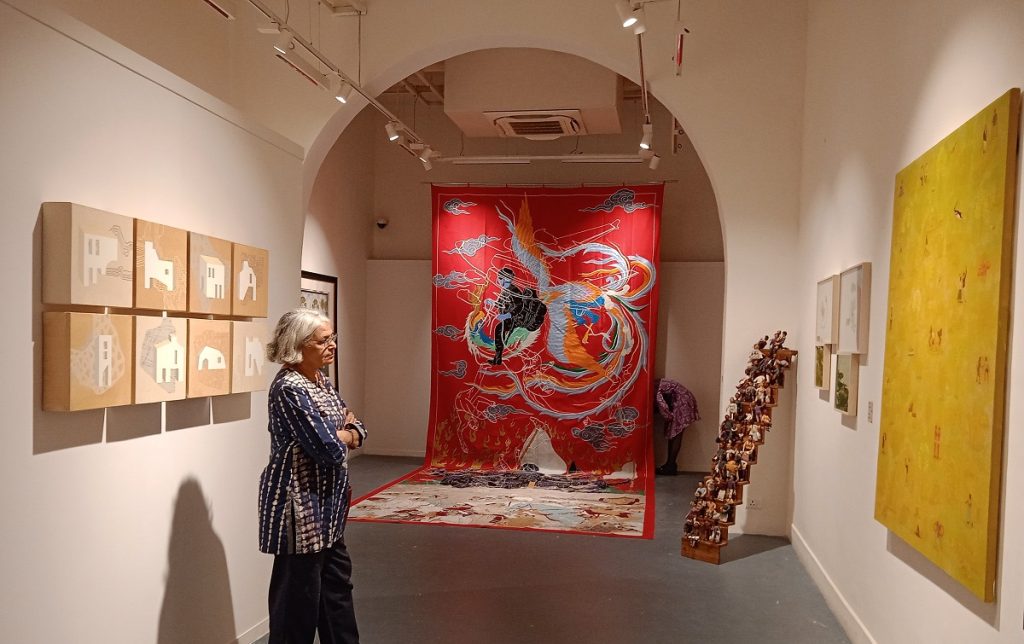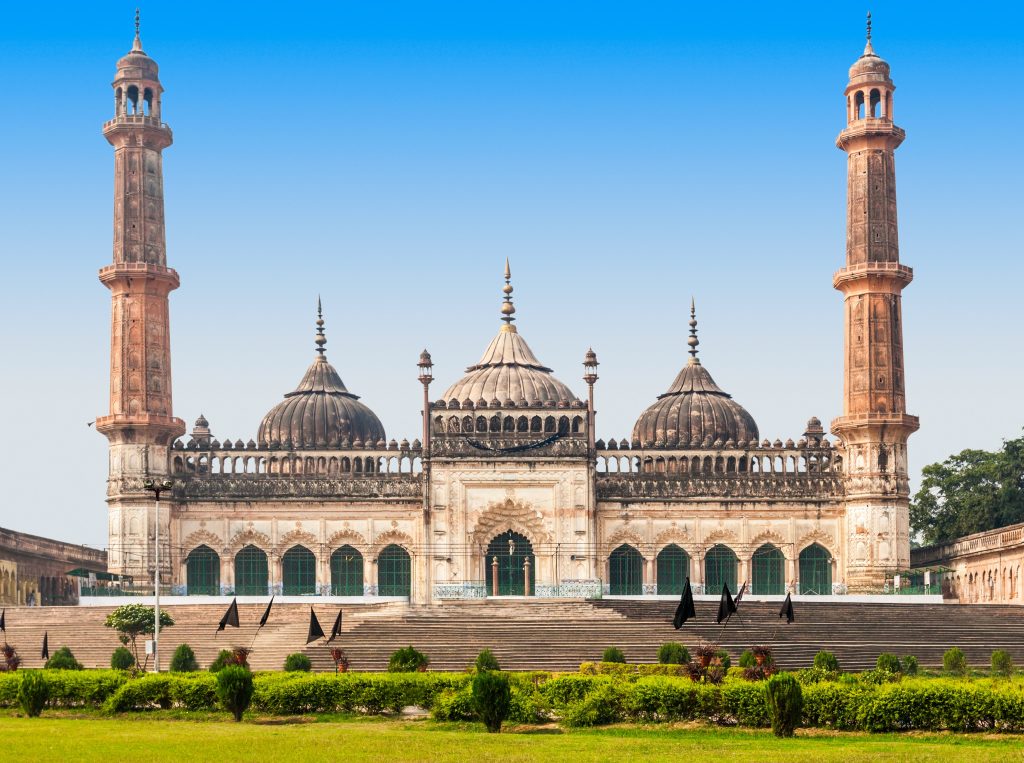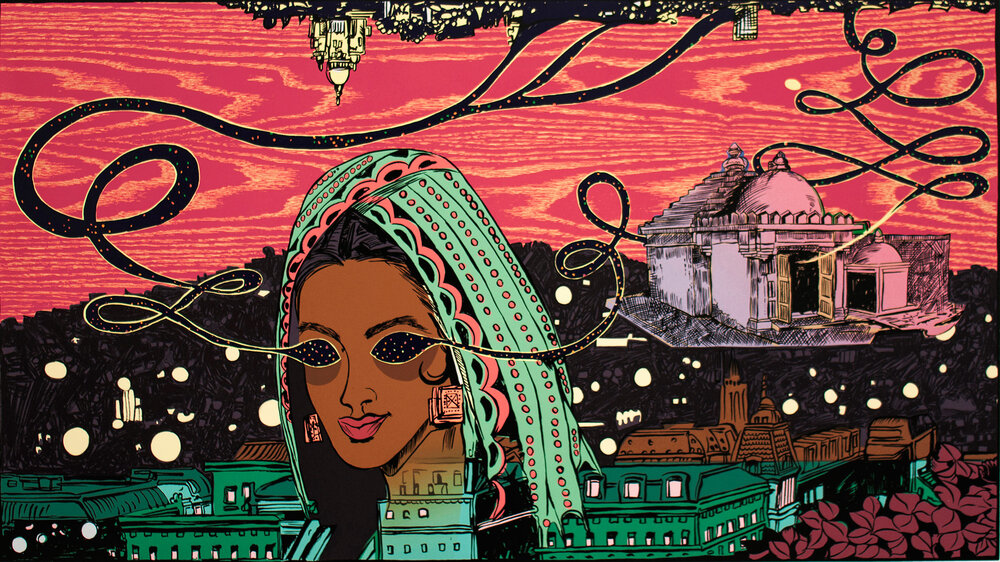The Delhi Contemporary Art Week brings a new wave of ways of seeing Art. The exhibition showcases the vibrant nature of artists from India and the broader South Asian region, including Bangladesh and Pakistan, at Bikaner House for a week-long programme. At first look, this event displays contemporary Art in different consistencies, philosophies and principles, mediums and nature of practices, political and sociological, naive and aggressive tone.
Six City-based Art Galleries bring this vibrant nature artist together in Bikaner House, such as Blueprint12, Exhibit 320, Gallery Espace, Latitude 28, Shrine Empire and Vadehra Art Gallery. The Delhi Contemporary Art Week features over 50 artists from India and abroad, committed to promoting younger talent in Contemporary Art and a devoted venue for artists and audiences to meet together.
The Art exhibition curated as two thematic collections, one is Red to the Bone, earmarked to the colour red, and “Conjunction of the Spheres” curated by Girish Shahane — are also on view and trait artworks of over 15 artists from across the subcontinent. This idea gives a breathing space for the curation to bring various art practices and cohesive tones in mediums into harmonious visual affairs.
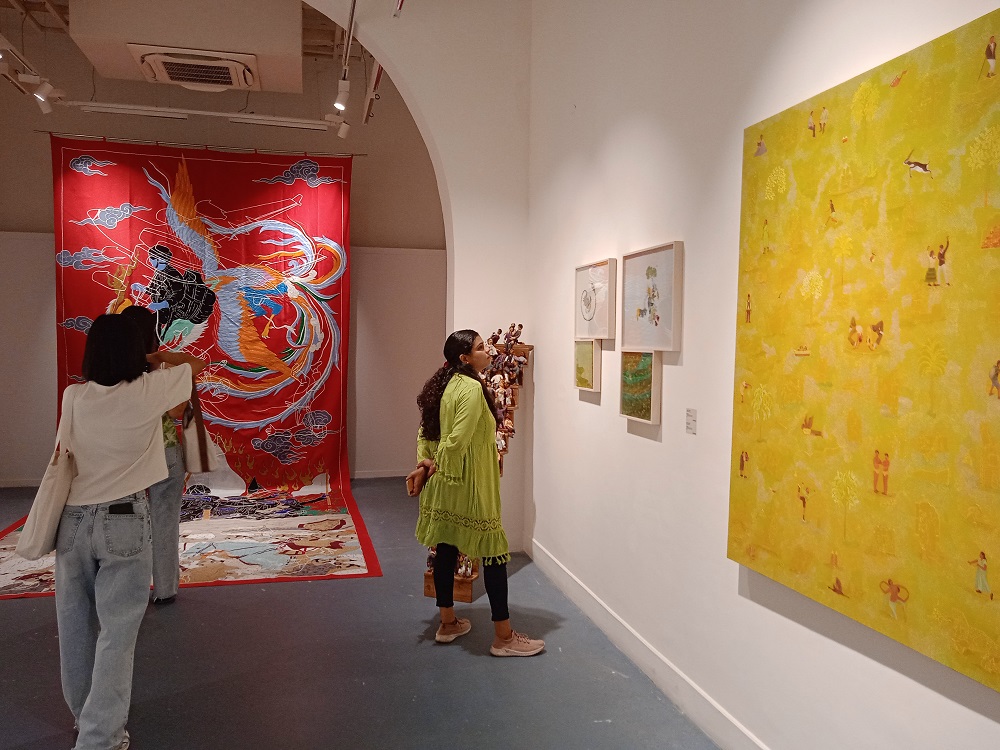 Gallery Espace is setting up a room spread out in the Bikaner House exhibition space for contemporary art practice in textile mediums, featuring ten contemporary textile artists, pushing the boundaries of style and bringing diverse ideas from the sea, human daily life, socio-politics changes of land and people, in wool, silk, jute, and varied materials, engage processes such as knitting, crochet, batik, weaving, braiding, stitching, quilting, and beadwork.
Gallery Espace is setting up a room spread out in the Bikaner House exhibition space for contemporary art practice in textile mediums, featuring ten contemporary textile artists, pushing the boundaries of style and bringing diverse ideas from the sea, human daily life, socio-politics changes of land and people, in wool, silk, jute, and varied materials, engage processes such as knitting, crochet, batik, weaving, braiding, stitching, quilting, and beadwork.
This show is a mixture of old and young generation artists from across the Indian sub-continent and abroad, like Chitra Ganesh, Manisha Gera Baswani, Mekhala Bahl, Paula Sengupta, Shobha Broota and Vasudevan Akkitha. From the younger generation, Sujith SN, Gopika Nath, Devi Seetharam and many others have brought ‘new waves’ in Indian practice. One side of this show is the traditional Art practices and mediums, and the other is narrating the story of highly innovative artistic techniques and mediums and thematic representations.
South Asian creativity
The Delhi Contemporary Art Week led to understanding South Asian creative ambience grows in different landscapes, political ideologies, the tapestry of visual language, thematic and technical methods, and many other meticulous things. The tightly capsulised five-day schedule contains exhibitions, workshops and a symposium emphasising group exhibitions, walkthroughs, and discussions.
Treasured Ornaments
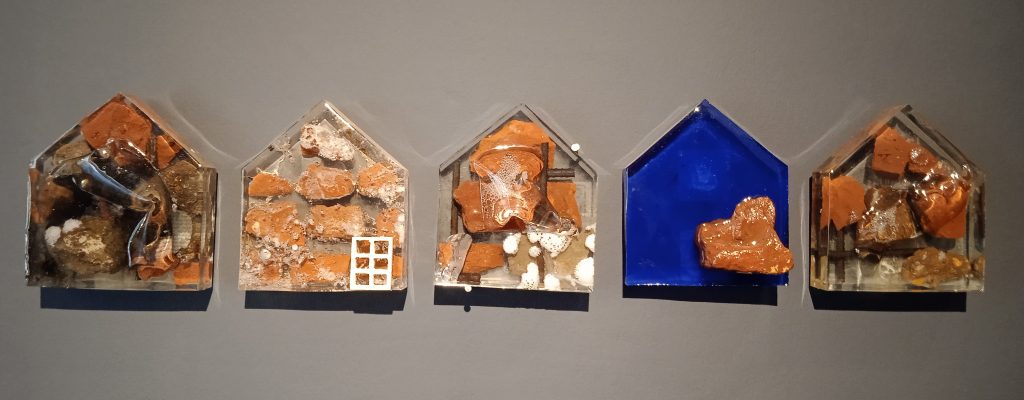
A couple of works by Harman Taneja brought by Latitude 28 exhibited in this show get a perspective on the material life of the world. Taneja encapsulates the idea of home or house in found material from the surroundings and fixed in a designed ‘home’ with other things like pigment cloth and epoxy resin. Taneja’s art practice rerouted from an architectural perspective and took on a distinct journey, from exploring the blank site to forming a space that lends another dimension to the artwork. Tanej’s exploration of different materials like water and concrete, and still trying to confront the material, challenging her practices. That innovative practice is reflected in the works exhibited in this show.
Richness of an Island
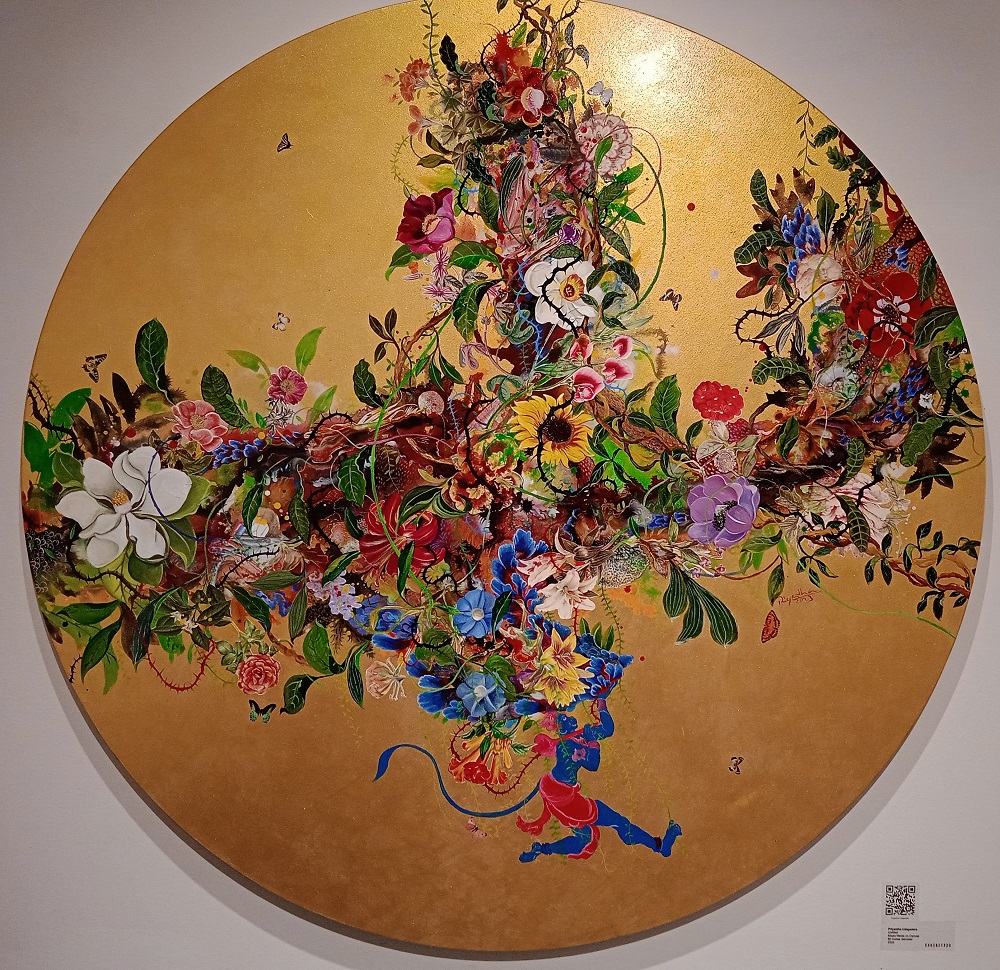
Sri Lankan artist Priyantha Udagedara brings a colourful visual story from his homeland, an island connecting with epic tales and mythical mountains. Priyantha’s childhood is in the middle of Sri Lankan civil unrest time, and those memories combined with his practice of myth and another element that gives his island country. The works exhibited in this show bring a new tone; as he mentioned, ‘My Art is a new form of landscape, one which exemplifies terror and beauty in one place. The viewer takes in a false sense of beauty before realising the displaced sense of agonising beauty”.
In a Maze of Time
Ketaki Sarpotdar is a Baroda-based painter and printmaker who elevated her Art practice during the pandemic. In the works exhibited in this show, she interrogates the human capacity to explain lived experiences, showcasing a monkey-like person crouched over a smartphone with news about the COVID-19 pandemic. Shashank Peshawaria, a Punjab-born visual artist, bring a series of photographs that mediates the landscape of his homeland, portraying the people’s sweeping economic change and migration. In ‘The Outburst, Shrimanti Saha narrates the visual story of organic physiques and fragmented architecture through abstract dimensions. She studies the anthropo-centric human necessity in the context of modern matters like ecological concerns and subjects about identity, gender and violence that are evolving in her artistic practice.
This show brings new ideas and modernised thought of new mediums and other events like symposiums on ‘Horizon and Perspective: Curatorial Gaze to Gauge Promise of Art, accentuating the essence of curatorial affiliations alongside a radical bearing to viewing Art.
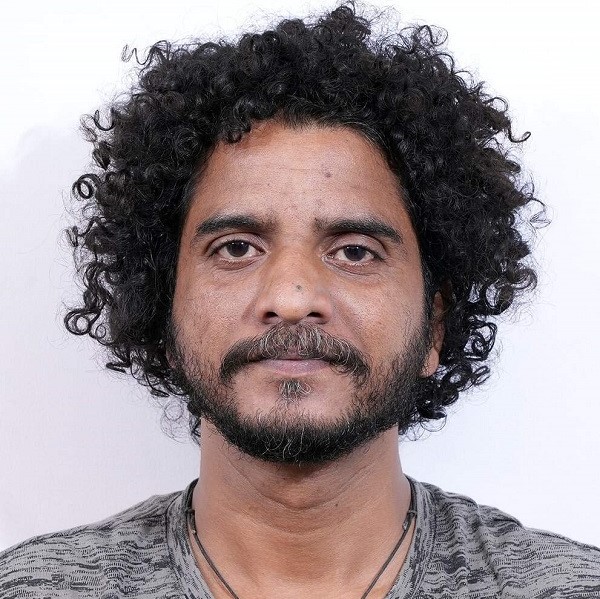
Krispin Joseph PX, a poet and journalist, completed an MFA in art history and visual studies at the University of Hyderabad.

